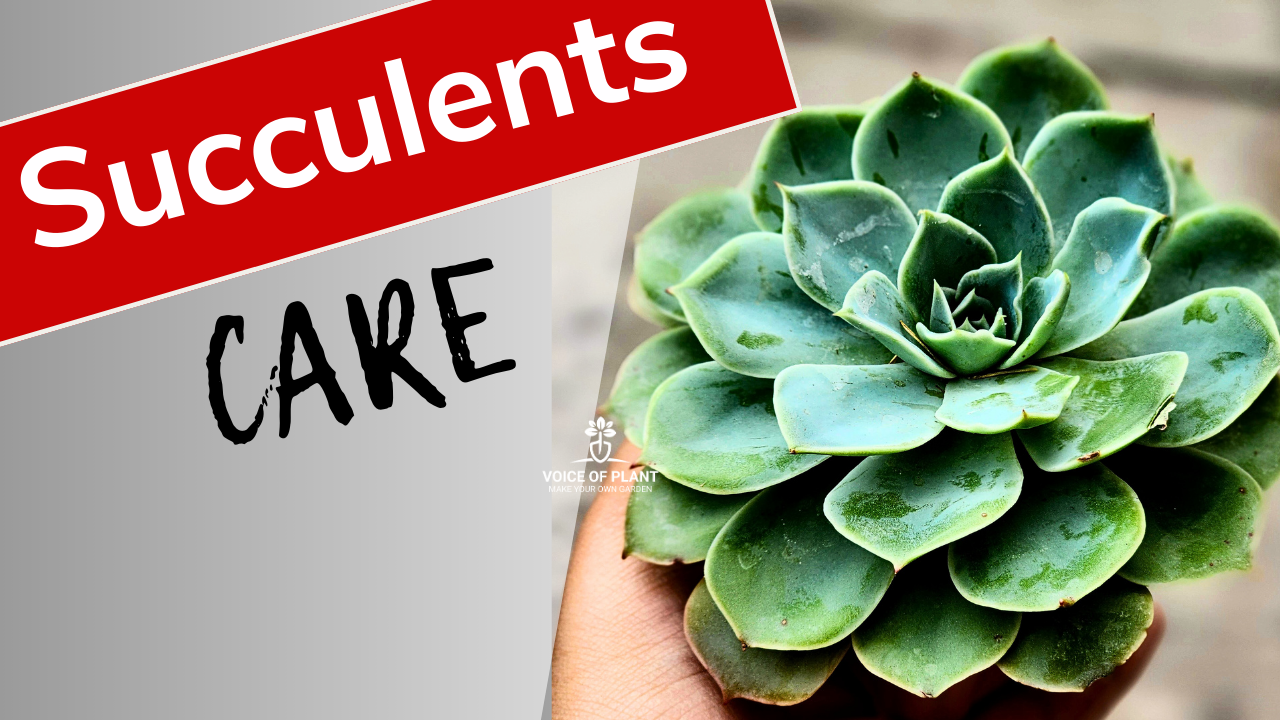All About Succulents Care
Succulents have become increasingly popular due to their minimal care requirements and stunning aesthetic. Whether you are a beginner plant parent or an experienced gardener, succulents are a great addition to any home or garden.
It’s a common issue for many gardeners: they bring a succulent home, and after just a week, their succulent begins to rot, its leaves turn brown, and eventually fall off. This can be frustrating, especially since succulents are often perceived as low-maintenance plants.
However, the key to keeping succulents healthy lies in understanding their unique needs. In this article, we will cover everything from essential care tips to propagation methods, soil mixtures, and more, ensuring your succulents thrive in any environment.
1. What Are Succulents?
Succulents are hardy plants known for their ability to store water in their thick, fleshy leaves, stems, or roots, making them incredibly drought-resistant.
- They have evolved to survive in some of the harshest climates, and their minimal care requirements make them an excellent choice for both seasoned gardeners and beginners.
2. The Popularity of Succulents
Over the years, succulents have gained massive popularity in India and world due to their low maintenance and the fact that they thrive in a variety of environments.
- Whether in homes, offices, or gardens, succulents are loved for their exotic look and ease of care.
Succulents Care – Basic Tips
To grow healthy succulents, it is essential to understand their basic care needs. From the right soil mixture to ideal watering schedules, each element contributes to the plant’s overall health and growth.
1. Ideal Temperature for Succulents
Succulents thrive in temperatures around 15°C – 25°C. If temperatures rise and the environment becomes too hot or humid, it’s recommended to use a white shade net to protect the plants.
- Avoid using green or dark-colored nets, as they may trap too much heat.
2. Best Soil Mixture for Succulents
Succulents require well-draining sandy soil to prevent root rot. A mix of sieved soil and cow dung compost in a 3:1 ratio works well.
Note:
- If the available soil is too clayey, you can add materials like sand, concrete, or wood chips to improve the texture.
Click here to read: Tips to Prepare Best Soil Mix for Plants
3. Watering Succulents: How Much is Enough?
One of the most common mistakes with succulents is overwatering. These plants prefer dry conditions and only need watering every 8 to 10 days.
- You can tell it’s time to water when the plant begins to wither slightly.
- Always ensure the soil dries out between waterings to prevent rotting.
Note:
- After repotting succulents, avoid watering for at least 8 to 10 days to allow the plant to adjust to its new environment.
Click here to read: How to Water Plants Correctly
4. Positioning and Placement of Succulents
Succulents should be kept in a separate area from other plants to prevent accidental overwatering.
- Ensure they’re not placed in locations where they might be exposed to direct rain or intense sunlight, such as open balconies.
5. Sunlight Requirements for Succulents
Although succulents don’t need direct sunlight, they do require some exposure to indirect light. A well-lit space with indirect sunlight and good airflow is perfect for these plants.
- They will not thrive in complete darkness, so make sure they receive enough light during the day.
Tips to Encourage Denser Growth in Succulents
To encourage denser growth, consider trimming the branches at the nodes or taking cuttings from mature plants. This stimulates new branch development, resulting in a bushier and fuller plant.
Pot Size Matters for Denser Growth in Succulents
The size of the pot plays a crucial role in how well your succulents grow, particularly in achieving dense, healthy foliage.
- If you plant your succulent in a small pot, its growth may be restricted, preventing it from becoming as full and lush as it could.
Succulents need adequate space to spread their roots and develop thicker, more robust growth.
To encourage denser growth, it’s best to plant your succulents in a larger pot, ideally one that is 6 to 8 inches in diameter. This allows the plant to expand both above and below the soil, promoting healthier foliage.
Note:
- Its important that the pot has a drainage hole at the bottom to prevent water from accumulating, as succulents are prone to root rot in waterlogged soil.
Conclusion:
Succulents are beautiful, low-maintenance plants that can bring a touch of nature to any space. By following these care tips—from proper soil mixtures to ideal watering schedules—you can ensure that your succulents thrive.
Follow our Social media channel:
2. Voice of Plant Facebook Page
3. Instagram Voice of Plant Channel
Happy gardening!
